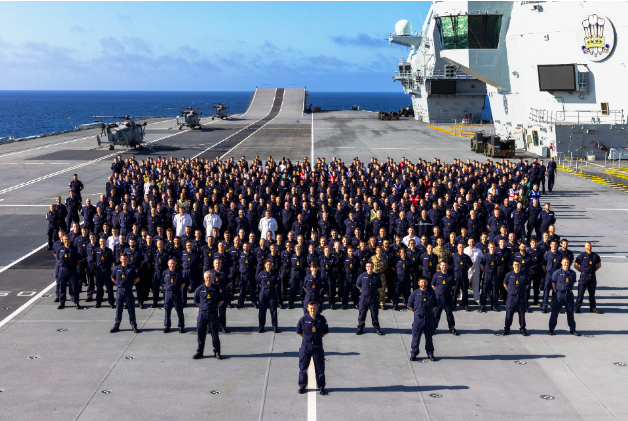
The safety management requirement to record the presence of sailors on board ships is being overhauled using new technologies being trialled by the Royal Navy.
The traditional system for recording sailors entering or leaving a vessel is a simple pegging in/out board. This records the number of Souls on Board (SOB) in cases of an emergency whilst in port and the basis for muster sheets for emergencies at sea. Separate processes for visitors and contractors add to the complexity.
Organised through a Defence and Security Accelerator (DASA) competition, The Defence Science and Technology Laboratory (Dstl) is supporting this project to look at innovative Personnel Accounting and Location (PAL) solutions to account for, muster and locate personnel aboard Queen Elizabeth Class (QEC) carriers in real time.
Owing to the size of the ship, the relatively low size of ship’s company and the high number of compartments, it is currently extremely difficult to accurately locate crew if they have not been seen for some time.
A number of technologies were trialled on several vessels, resulting in the selection of a system by Kinsetsu which delivers a Radio Frequency Identification (RFID)-based solution. This is now being assessed through a Fleet Trial involving HMS Queen Elizabeth (QNLZ) and HMS Prince of Wales (PWLS).
A Fleet Trial of Kinsetsu’s ktrack system installed in both QNLZ and PWLS is being tested to explore the system’s effectiveness on a real Royal Navy vessel and explore the human factors issues associated with SOBs wearing this RFID technology.
The scope of this trial has included investigating the merits of a combined HF (High Frequency) and UHF (Ultra High Frequency) identity card worn on a lanyard (around the SOB’s neck) versus tags on bootlaces or sewn into uniforms.
BAE Systems and Kinsetsu installed all of the PAL equipment, cabling and modifications to the INE (Internal Network Electronics) VLAN (Virtual Local Area Network) in PWLS and QNLZ ready to provide an interim PAL capability for operational testing through Op Fortis – the operational deployment of the Carrier Strike Group.
Over the coming months, the trial is being conducted on both ships to build system functional data and capture operator and end user feedback until June 2022. Information gathered will be used to shape a full requirement specification to Defence Equipment and Support (DE&S) for future procurement.
Lieutenant Commander Glen Kerrigan, Capital Ships Weapon Engineer in the Royal Navy and outgoing project sponsor, said: “The PAL project has exceeded expectations; this capability is now providing positive evidence that technology can reduce the Risk to Life (RtL) of Souls on Board and is being used as the primary accounting method on HMS Queen Elizabeth for her global deployment Op Fortis.
“To achieve this success on a strategic defence platform in a highly demanding environment is remarkable for any project; to get this far from a tech demo project is unheard of and has been the result of solid collaboration across defence organisations and suppliers.”
George Curtis, Dstl Project Manager, added: “The trial and deployment will generate valuable operational feedback, while providing the Royal Navy with a practical interim personnel accounting solution. It will be a significant enhancement to the safety of navy personnel, with potential for adoption on other vessels.”
image © Crown Copyright
DASA and Dstl are official DPRTE 2021 event partners
Taking place at Farnborough International on October 5th with elements of the event streamed online, DPRTE 2021 is the UK’s leading defence procurement and supply chain event.
For all involved within buying for or supplying to the defence sector, it’s an unmissable opportunity to hear from and engage with industry leaders, influencers and stakeholders.
To register today as a delegate, follow this link.
To take advantage of exhibitor or sponsor opportunities, please click here.
With DPRTE 2021’s Booking Confidence Guarantee you can now prepare to join the UK’s defence procurement community at DPRTE 2021.
Defence Online is the official media partner for DPRTE 2021
If you would like to join our community and read more articles like this then please click here







